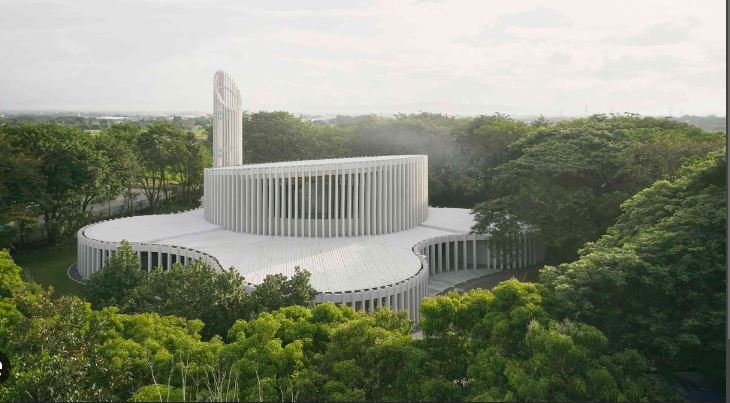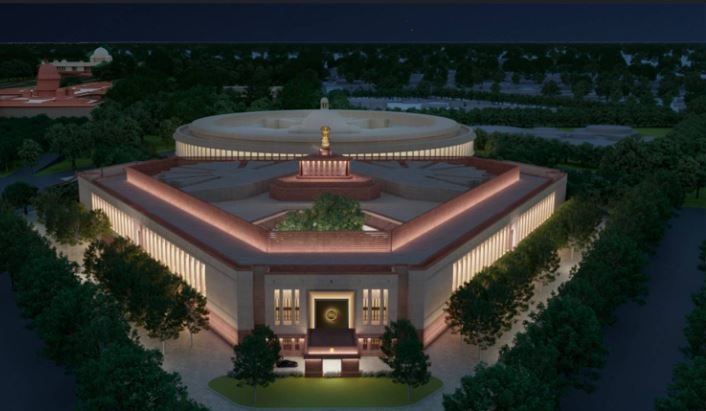Unveiling the Symbolism in Architecture
Architecture often transcends mere functionality, serving as a canvas for cultural, historical, and ideological expression. Unveiling the symbolism in architecture reveals the deeper meanings embedded in structures around us. By understanding architectural symbolism, we gain insight into the values and beliefs of the societies that created these buildings.

Historical Context and Symbolism
Historical context plays a significant role in architectural symbolism. Many ancient structures, such as the pyramids of Egypt or the temples of Greece, symbolize religious and cultural beliefs. These buildings were often constructed to honor deities or commemorate significant events. The materials used, the orientation of the structures, and their decorative elements all contribute to their symbolic meaning. Understanding the historical context helps us appreciate the intentions behind these architectural marvels.
Religious Symbolism in Architecture
Religious symbolism is prevalent in architecture across cultures. Churches, mosques, temples, and synagogues often incorporate symbols that reflect their faith’s teachings and values. For example, Gothic cathedrals feature pointed arches and ribbed vaults that reach towards the heavens, symbolizing divine aspiration. Islamic architecture frequently uses geometric patterns and calligraphy to reflect the infinite nature of Allah. These religious symbols create spaces that inspire spiritual contemplation and devotion.
Political and Ideological Symbolism
Political and ideological messages are often conveyed through architecture. Government buildings, monuments, and memorials are designed to represent power, unity, and national identity. The United States Capitol, with its grand dome and neoclassical design, symbolizes democratic governance and the ideals of the nation. In contrast, the stark and imposing architecture of Soviet-era buildings reflects the authoritarian nature of the regime. By examining these structures, we can understand the political ideologies they represent.
Cultural and Social Symbolism
Cultural and social symbolism is evident in residential and public buildings. Traditional Japanese tea houses, for instance, embody the principles of simplicity, harmony, and nature central to Japanese culture. In modern urban environments, skyscrapers symbolize economic power and technological advancement. Social hierarchies and cultural identities are often reflected in the design and layout of neighborhoods and public spaces, highlighting the relationship between architecture and societal values.
Symbolism in Modern Architecture
Modern architecture also incorporates symbolism, often in more abstract forms. Architects like Frank Gehry and Zaha Hadid use innovative shapes and materials to convey ideas about movement, fluidity, and the breaking of conventional boundaries. Sustainable architecture, with its emphasis on green design and environmental integration, symbolizes a commitment to ecological responsibility. By pushing the boundaries of traditional design, modern architects create buildings that provoke thought and reflect contemporary concerns.
Interpreting Symbolism in Everyday Structures
Interpreting symbolism in everyday structures can enhance our appreciation of the built environment. Even mundane buildings, such as schools, libraries, and homes, often contain symbolic elements that reflect their purpose and the community’s values. The use of open spaces in schools symbolizes the importance of freedom and creativity in education. Libraries often feature grand entrances and large windows, symbolizing the pursuit of knowledge and transparency. Recognizing these symbols helps us connect more deeply with the spaces we inhabit.
Conclusion
Unveiling the symbolism in architecture allows us to see beyond the physical form of buildings and understand the deeper meanings they convey. From historical and religious symbols to political, cultural, and modern interpretations, architecture serves as a powerful medium of expression. By exploring these symbols, we gain a richer understanding of the societies that built them and the messages they intended to convey. In doing so, we appreciate architecture not only as a functional art but also as a profound narrative of human experience.



